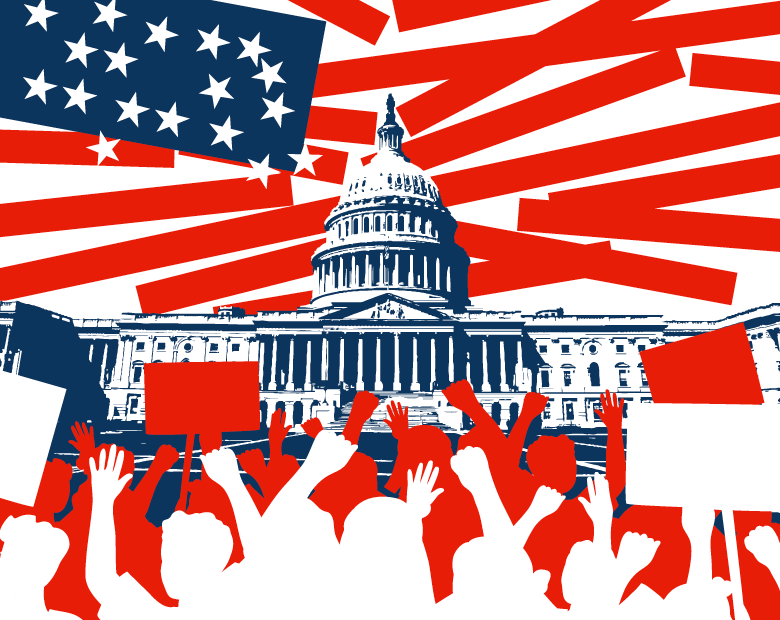"The older generations have zero idea how serious younger people are when they say, 'We can't afford kids.'"
It's no secret that childcare costs continue to be one of the most significant expenses for US families — one 2024 report found that childcare costs now outpace rent for the average American family.
And yet, as a person without kids, a childless cat lady, if you will, it's still mind-boggling to grasp just how expensive it is to raise a child in this country. It just doesn't even feel like a viable option right now. So, when I stumbled across a video by Paige Connell (@sheisapaigeturner) breaking down current daycare costs, I was absolutely floored.

"When somebody tells you they can't afford to have children, this is what they're talking about," Paige began in her video, before pointing to a 2024–2025 daycare rate sheet. "A woman in my town's Facebook group shared these daycare rates today, and she said, 'How do you afford kids here?' because nobody knows how anybody is paying for this."
"An infant for five days a week with 10 hours of care is $664 a week. That is just shy of $35,000 a year for one child," Paige continued. "And the price does not drop that much when they hit pre-K. Here it's $521 a week, which is about, like, [$27,000] a year."
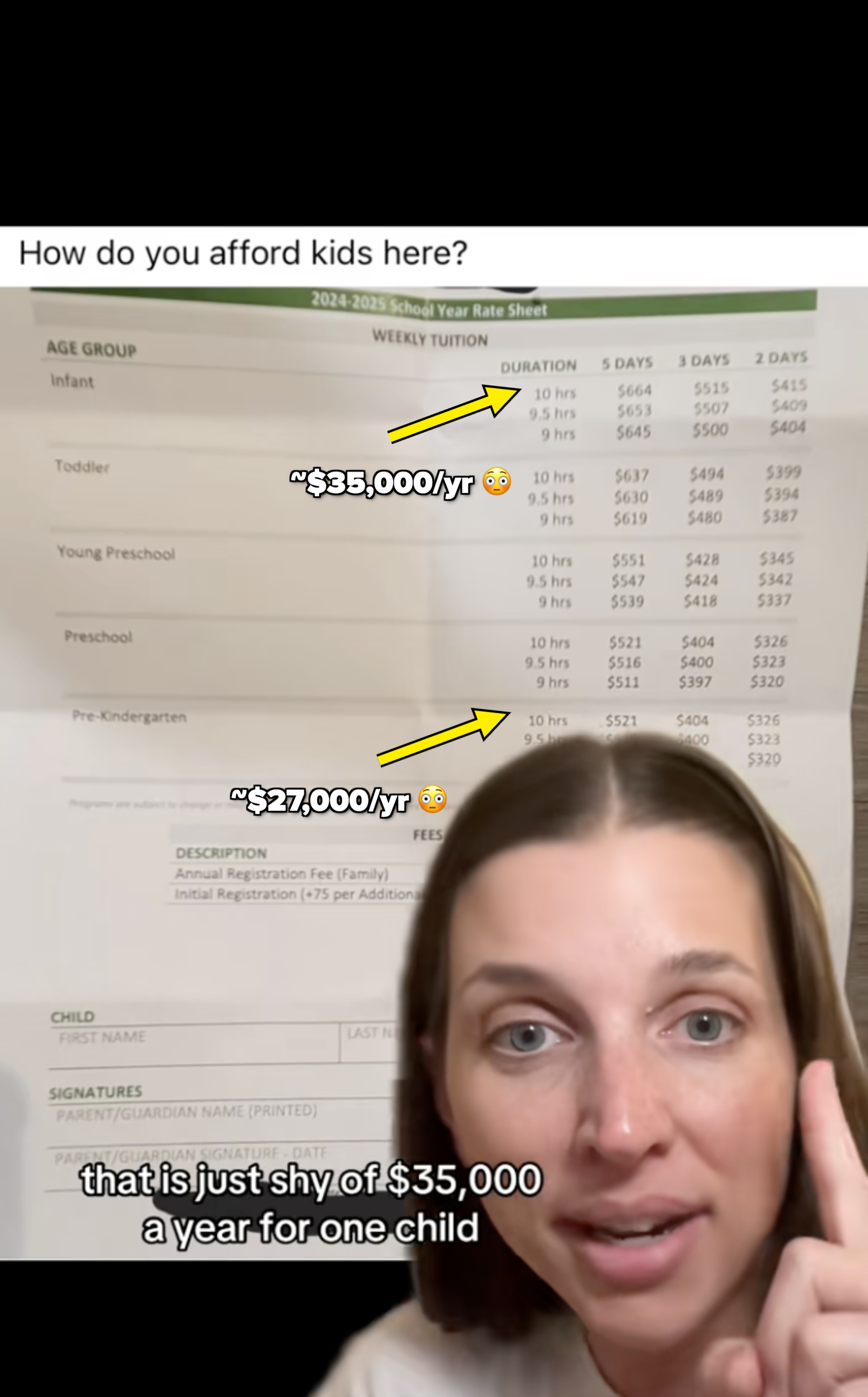
Paige admitted these are "incredibly high rates" for daycare, but even if the parent wanted to drop down to the "cheaper" option with fewer hours in daycare a day, it usually doesn't make sense for the parent, or become that much more affordable. "When you go to daycare, typically you're gonna take the most hours because you have to commute to work, you have to commute back from work, and you have to work eight hours a day," Paige said.
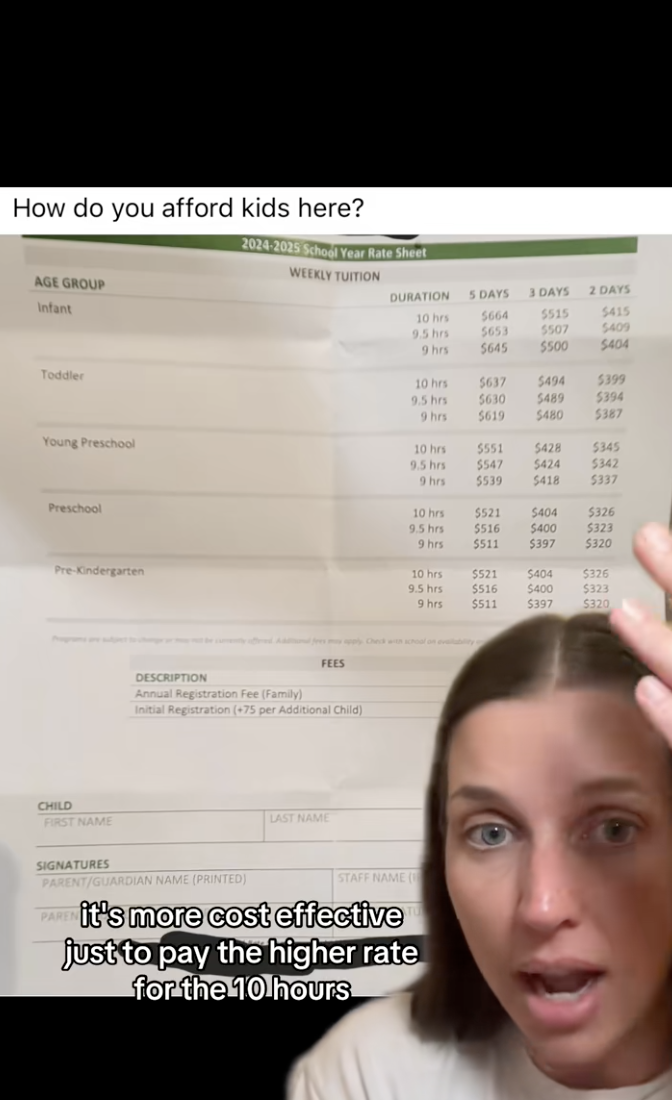
"These are rates for one kid. We are talking about one child," Paige continued. "Imagine a family that has two kids. They're paying 50, 60 thousand dollars a year for childcare. That is unsustainable for most families."
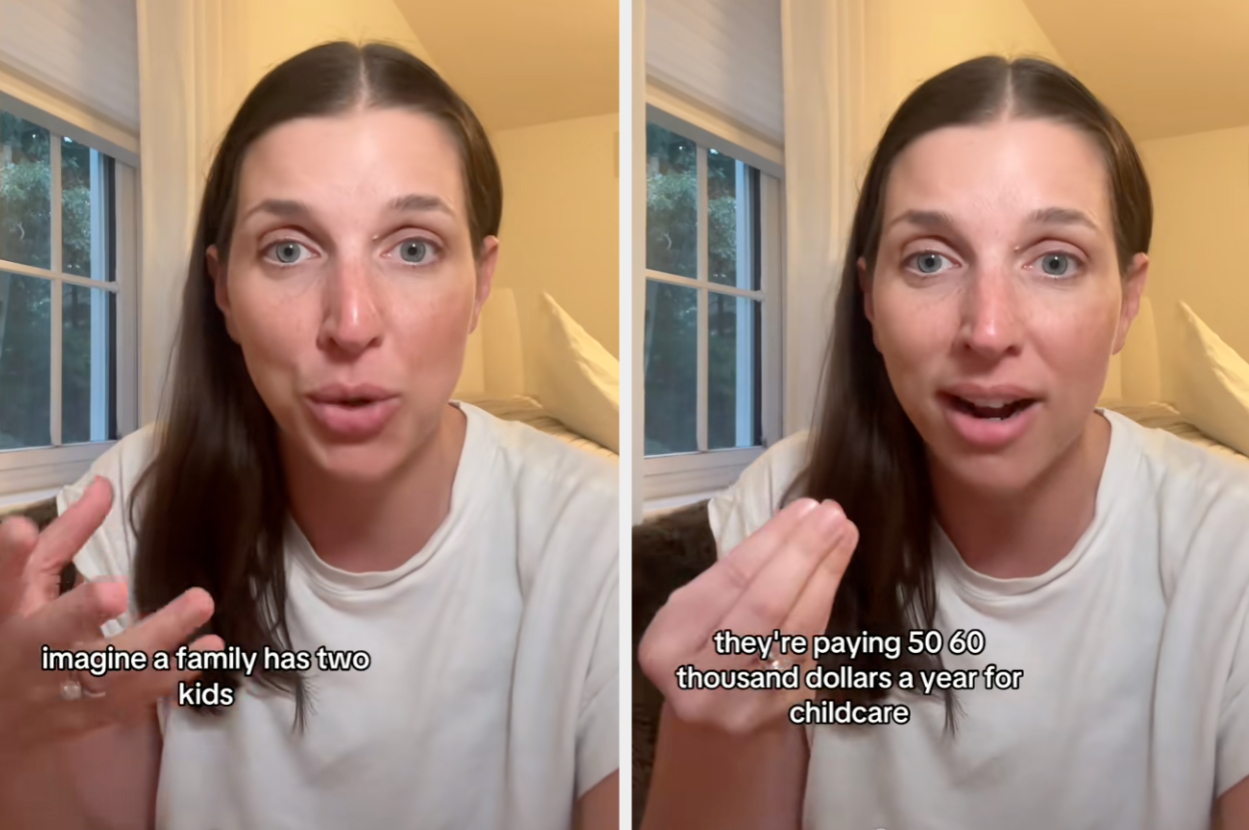
A report from Care.com found that the average parent spends 22% of their household income on childcare costs, with the average parent depleting one-third (29%) of their savings on childcare costs alone. For context, the US Department of Health and Human Services (HHS) deems 7% of family income as the benchmark for affordable childcare. That means current childcare costs are more than triple what's recommended and deemed "affordable" in the US.
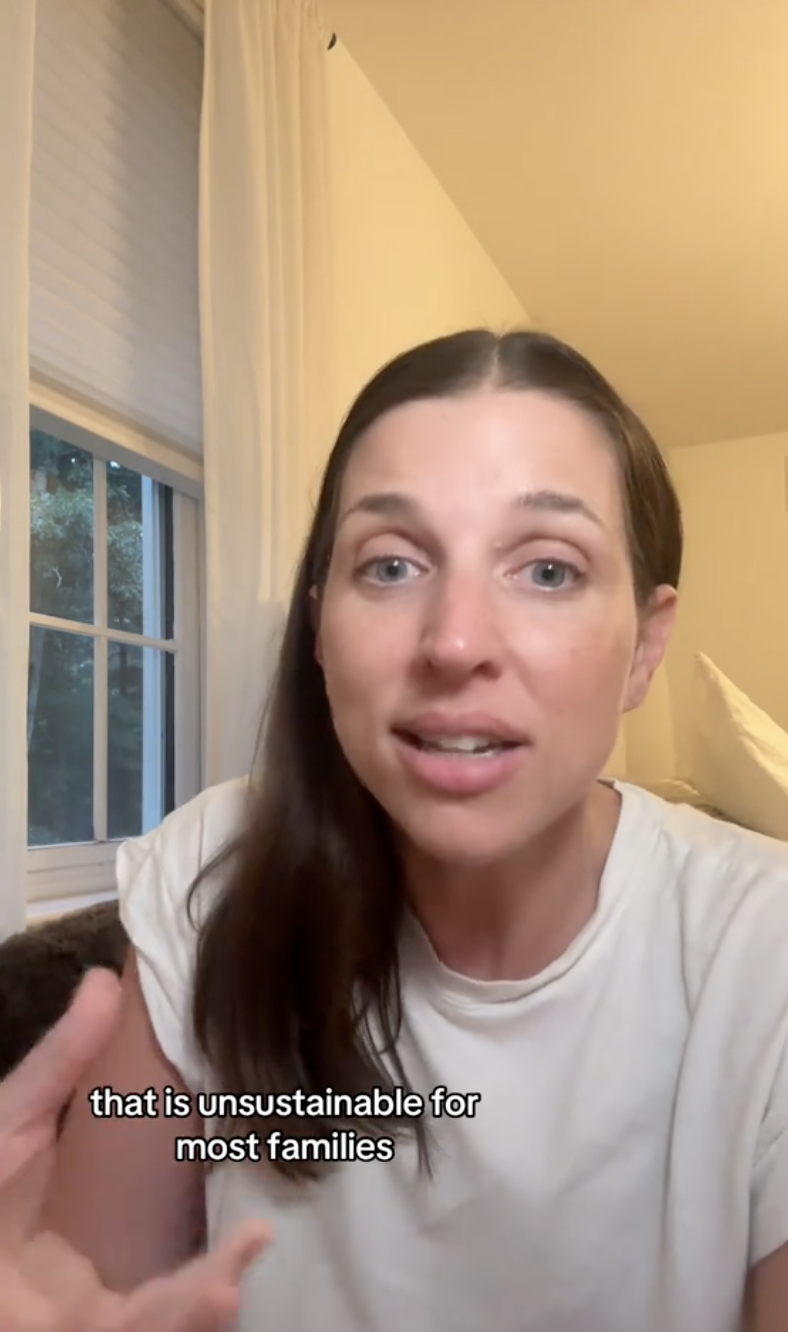
And while childcare costs decrease slightly as kids get older, Paige noted that doesn't count for the annual increase every school year. "Daycare centers raise their tuition because they have to, and typically, that's anywhere between 5 to 20%. And most people are looking at a 10% increase," Paige said. "So even though you have those savings when they hit pre-K, by the time your kid hits pre-K, it's been four, five years. That rate has gone up exponentially."
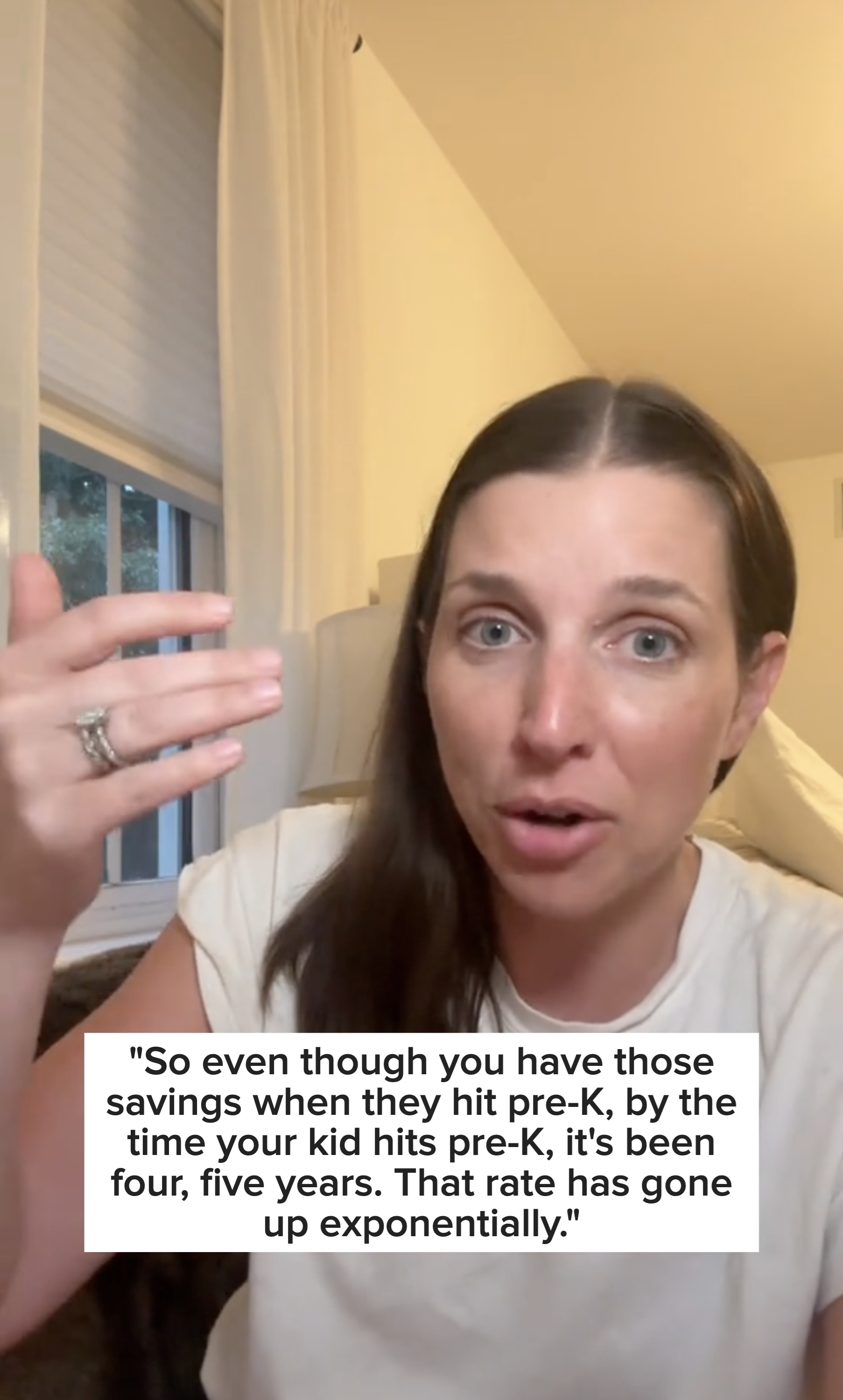
"So when someone tells you they can't afford to have children, oftentimes it is because of the cost of childcare," she continued. "And if it's not just the cost of childcare, it's the cost of housing and groceries. And you compound all those things, healthcare costs [too], it's incredibly expensive."
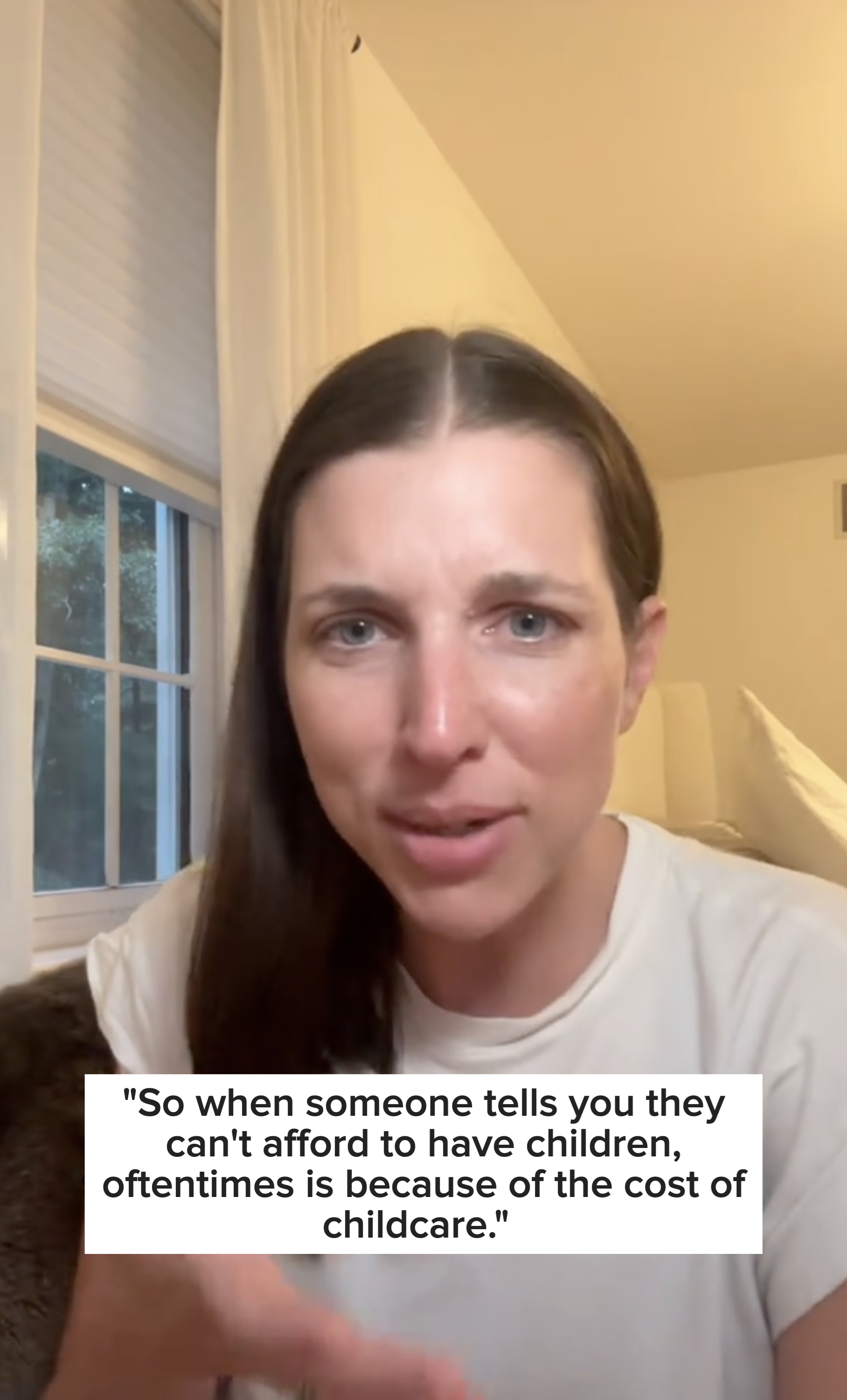
"I did not know, looking back four or five years ago when I first started having kids, that I would be paying this much money for daycare, because the rates looked drastically different," Paige admitted. "The rates over the last 20 years or something have gone up, like, 200%. It is wild how expensive childcare is in our country."
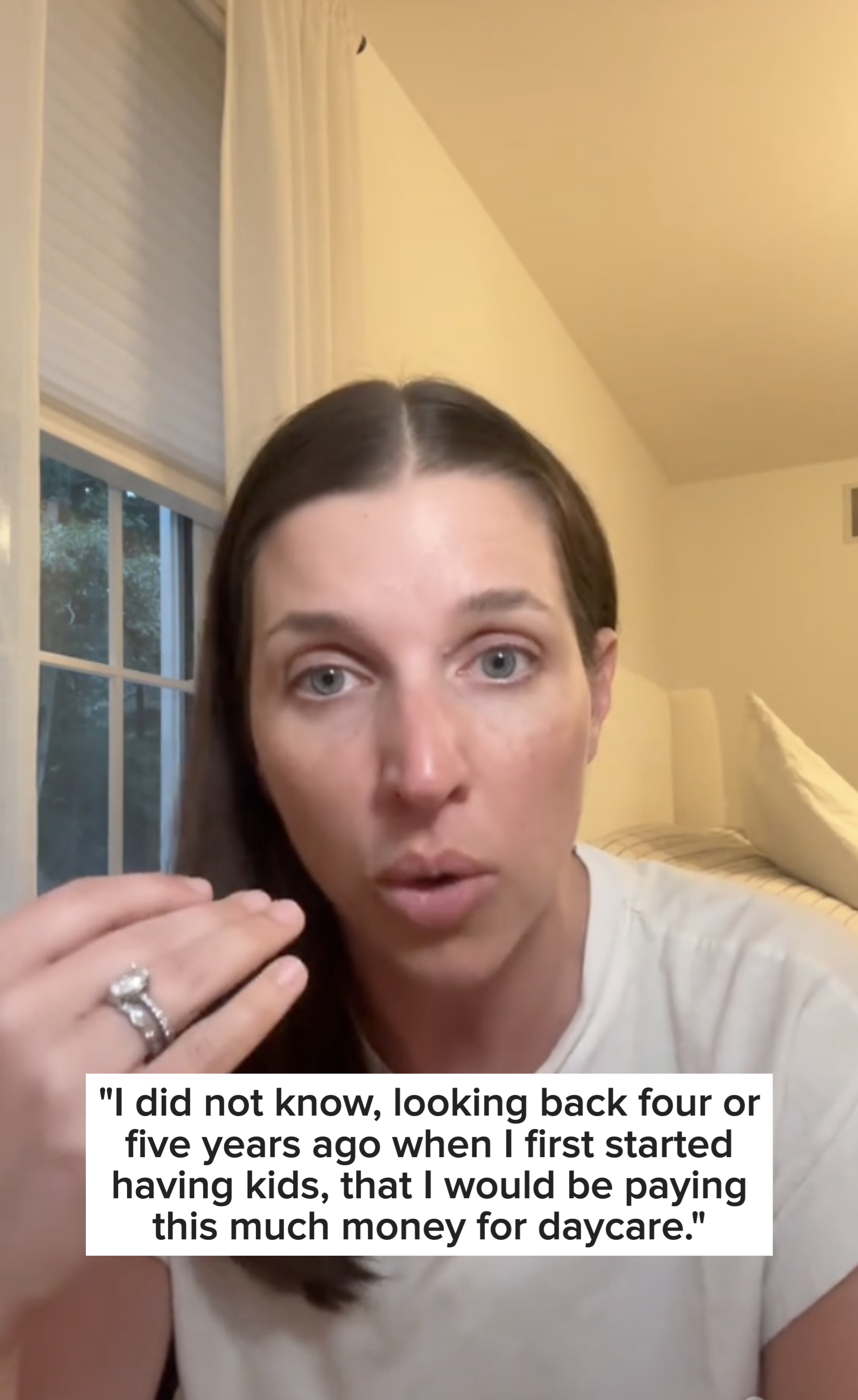
"If we had affordable childcare, it would not only benefit families and children, it would benefit the economy, it would benefit businesses, and it would benefit us as a greater society. The economy would be better for it," Paige said.
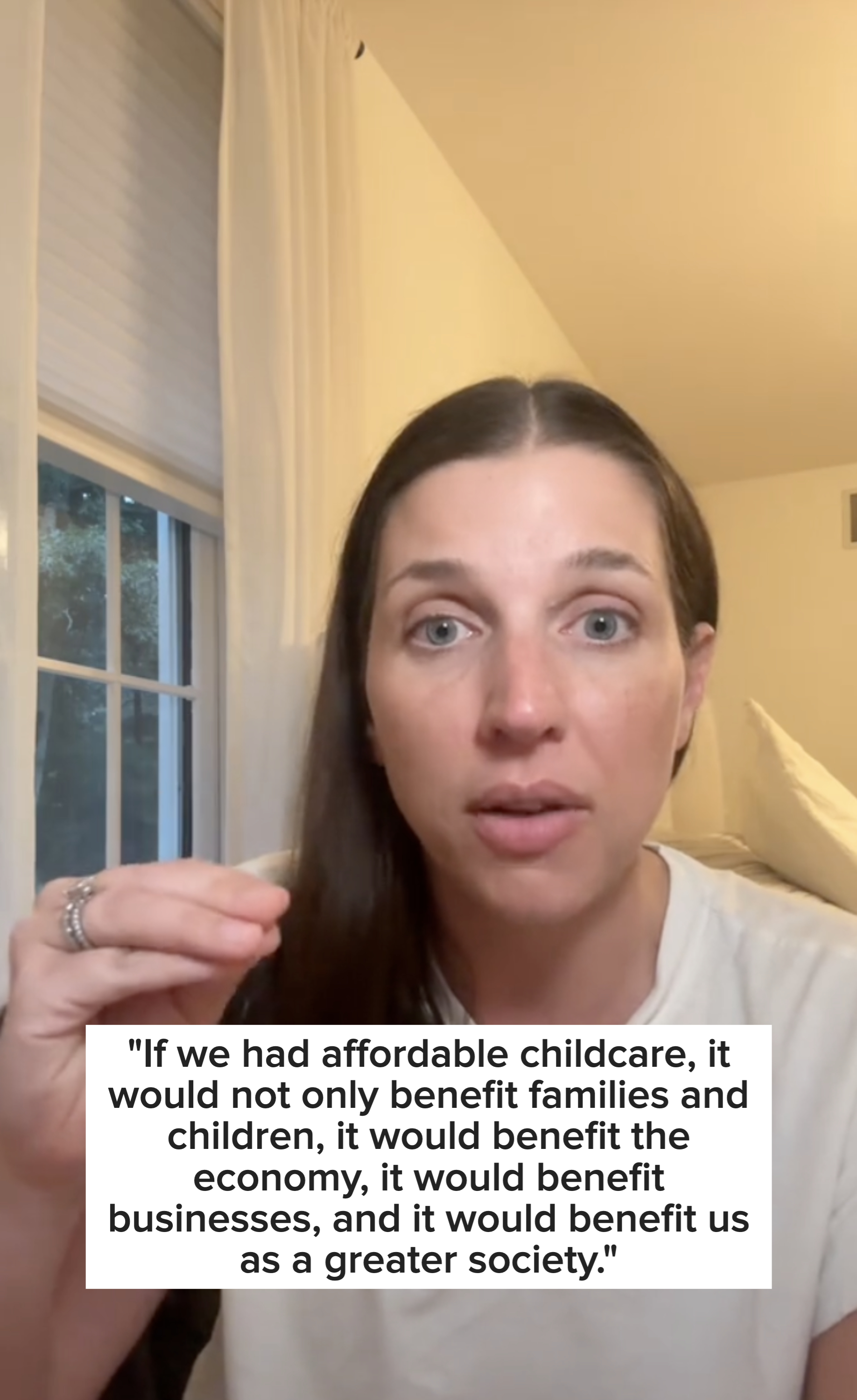
Paige ended, "This is not just a parent problem. People constantly are looking at adults who are married or of, you know, birthing years and saying, 'Why aren't you having kids?' And we're looking around saying, 'How could we possibly have kids when we can't even afford to buy a house?'"
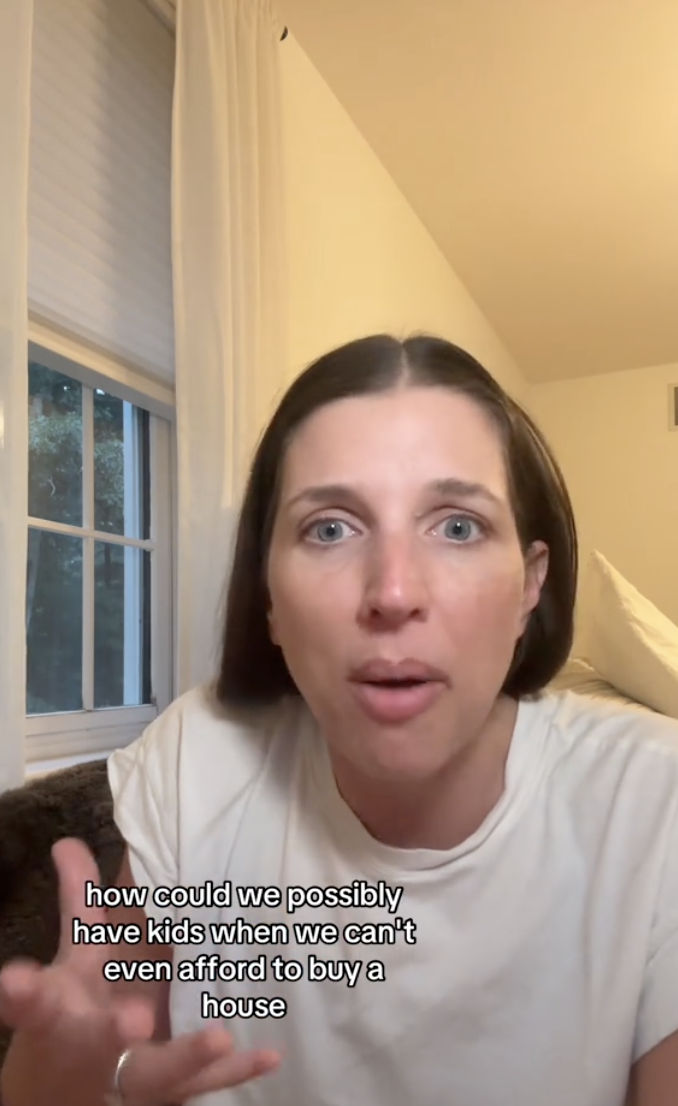
In another video, Paige shared that for her own family, she's paying about $40,000 yearly as a mom of four with two kids in full-time daycare.
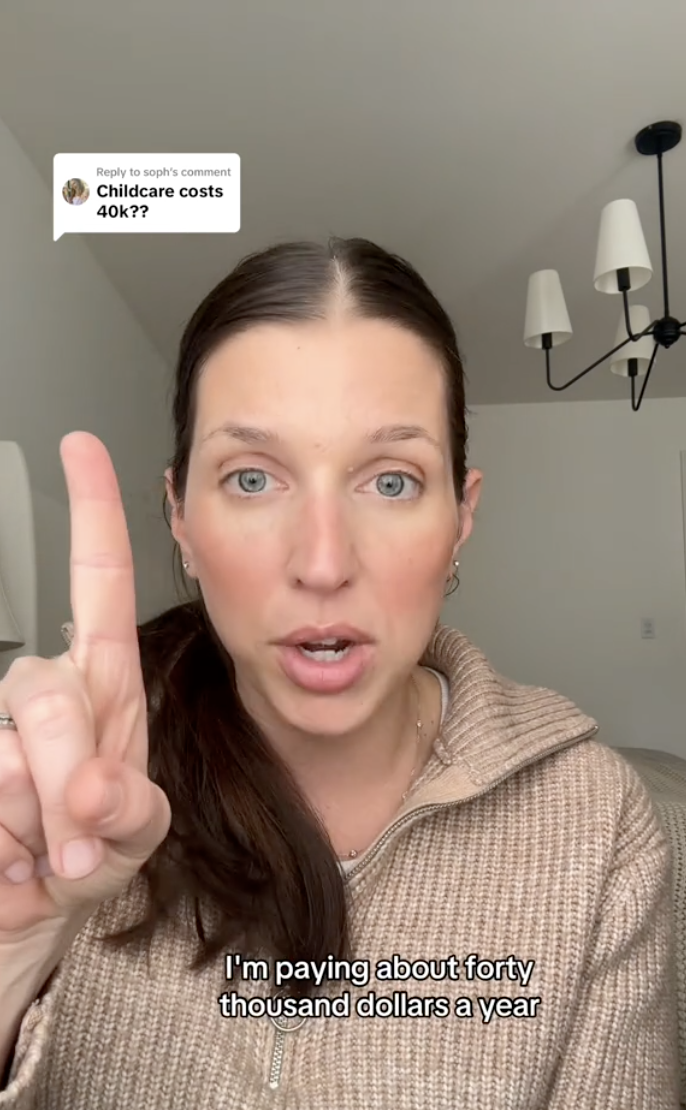
Paige explained that daycare rates depend on the children's ages and the type of childcare center. "So, if you have an infant in my center, it's over $100 a day. So you're spending over $500 a week, over $2,000 a month for one child in full-time daycare."
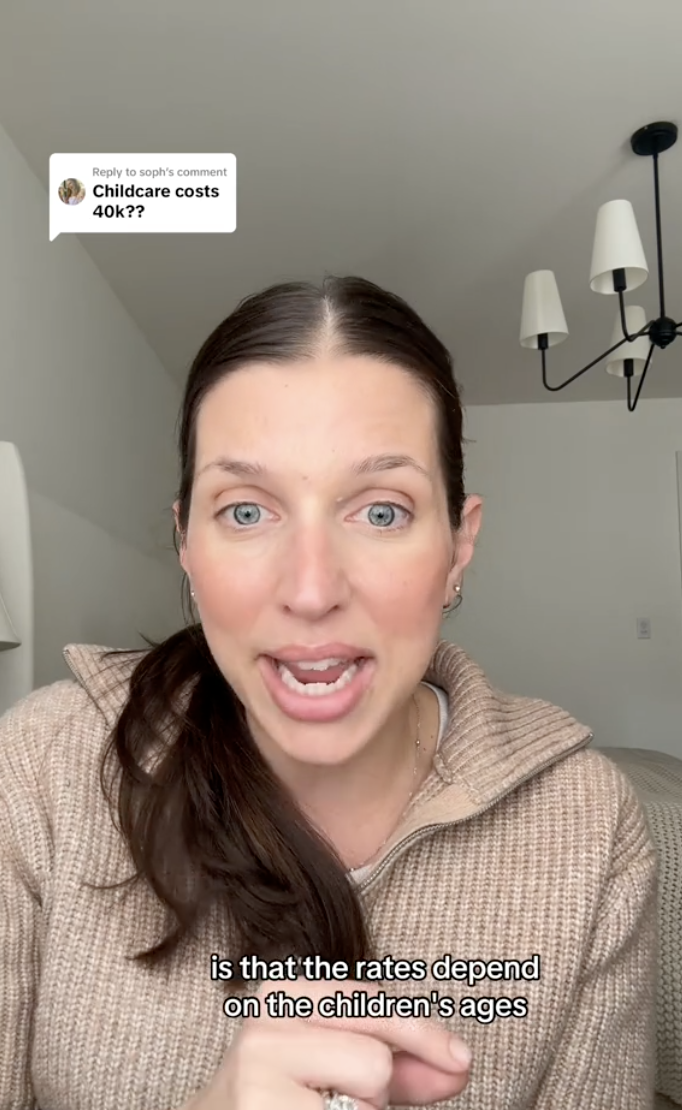
Now, Paige is located in Massachusetts, where childcare is notoriously high. A 2021 report found the annual average cost of child care for one kid was $19,961, which is pretty on par with what she's spending. In comparison, the average cost of childcare nationwide sits at $11,582, as of 2023. Still, that's a hefty price tag (roughly $965 extra a month) that many families cannot front.
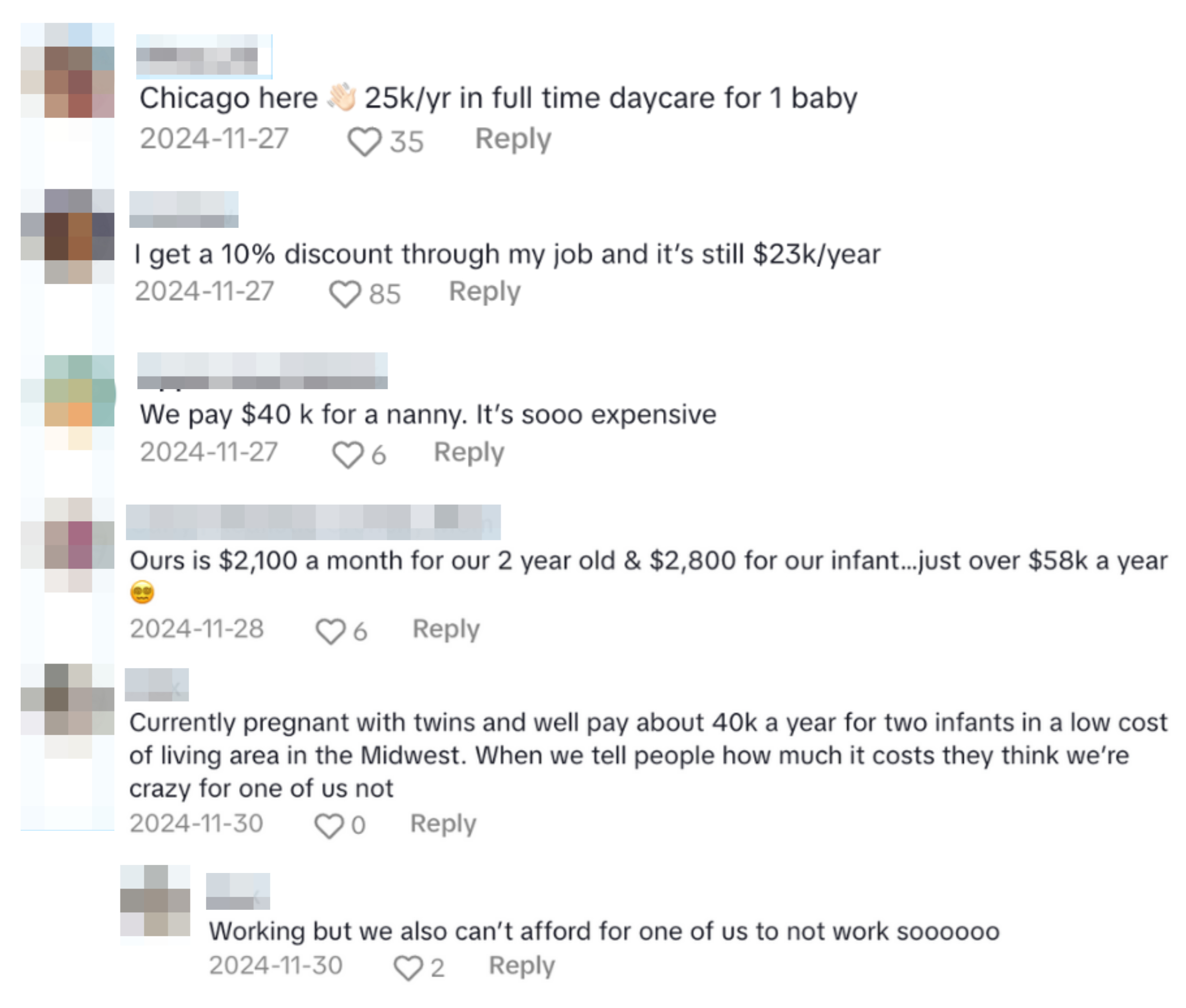
Where other countries subsidize childcare (for instance, where my partner lives in Quebec, Canada, the daily cost of subsidized daycare is $9.10 CAD per child, or $273/month), the US system is mainly private, highly regulated, and left up to the states to address, making the industry unaffordable and rife with issues for both providers and families.

During the pandemic, the federal government provided the childcare industry with an unprecedented $52 billion in COVID-19 relief. However, most of this funding expired in September 2023.
Without additional public investment, experts warn that tuition hikes and potential program closures are likely, and unless Congress approves funding increases, states will continue to be responsible for bridging the financial gap to address the growing childcare crisis.
According to a bipartisan poll conducted by the First Five Years Fund in 2024, voters across party lines (89%) overwhelmingly wanted candidates to have a plan to address the childcare crisis. And yet, despite the current administration running on a "pro-baby" platform, Trump gave a rambling non-answer on how he was to address this crisis, and JD Vance notoriously suggested "maybe grandma and grandpa" can help out a little more, when asked about lowering the cost of daycare.
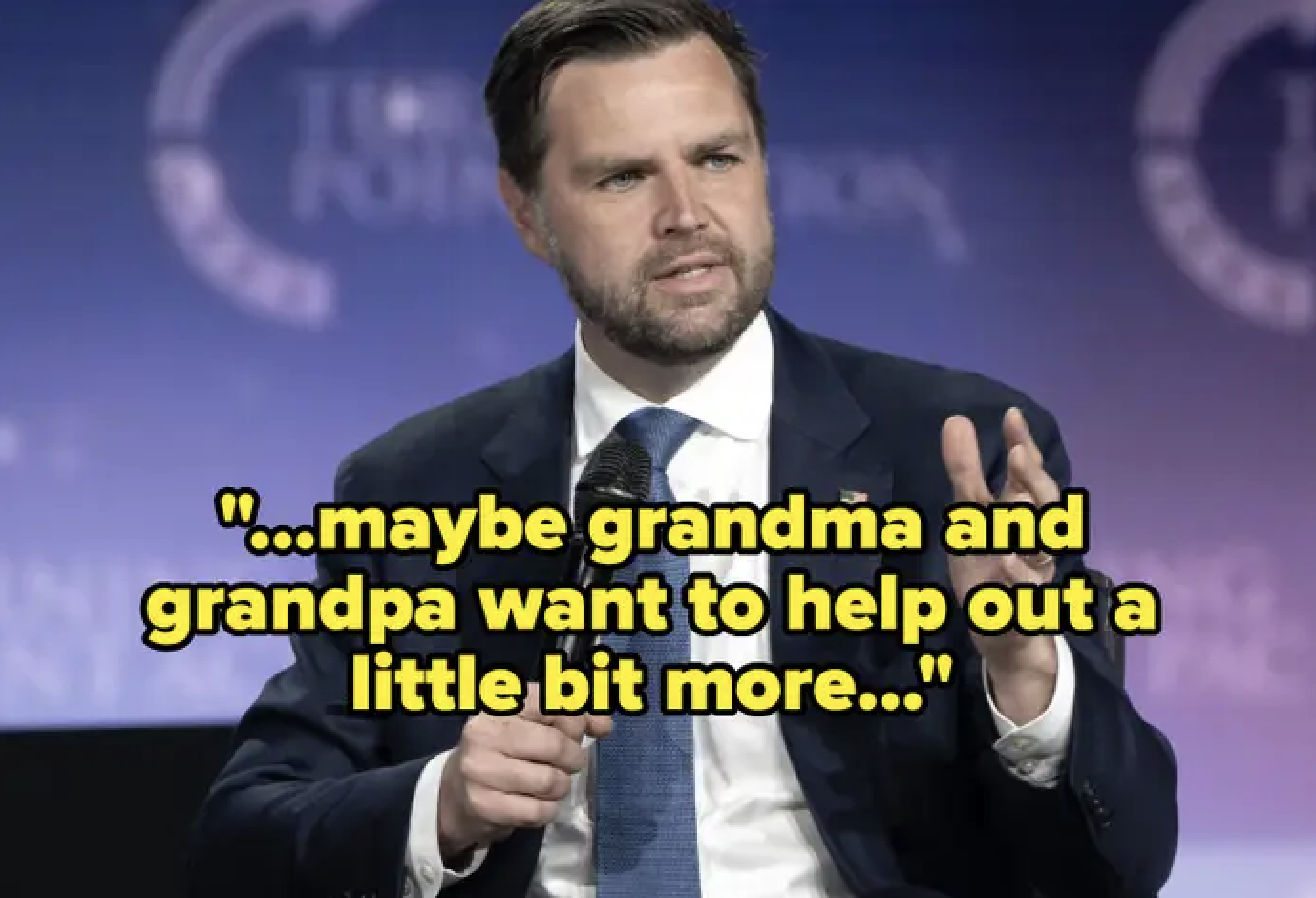
Since then, some House Republicans have included the childcare credit, which has long helped parents with childcare expenses, as part of potential federal programs to cut. And despite a federal judge blocking the Trump administration's federal funding freeze, some critical childcare programs serving thousands of children nationwide said they could not access their funds for weeks after.

For Paige, she said that to make childcare more affordable in the US, she believes the government needs to "invest in childcare as a fundamental part of our social infrastructure." She told BuzzFeed, "Other countries provide subsidies and funding to make childcare more accessible, and the US should follow suit. Affordable childcare isn’t just a benefit for parents; it's essential for a thriving economy."
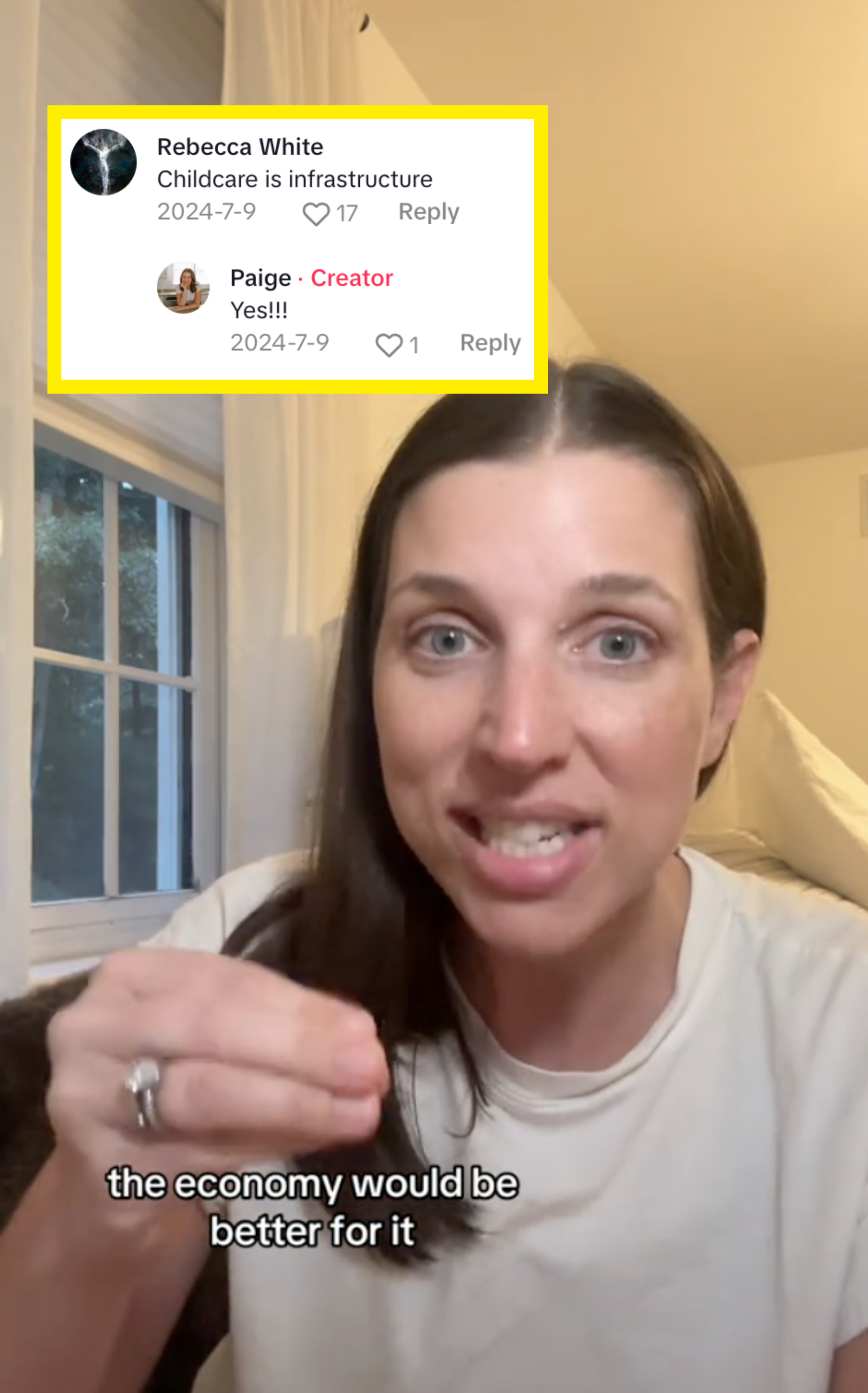
Paige explained that, currently, most of the people in her circle plan their families around the cost of childcare, and that affording childcare often means sacrificing other financial priorities. "The high cost — especially for infants — often leads parents to space their children further apart than they originally intended. For example, I know families who have delayed having a second child until their first is in public school because they simply couldn't afford two kids in full-time daycare at once," she explained.

In the comments of Paige's videos, many commiserated over the high cost of childcare and how it often plays into whether or not they have kids. "I got passed over for a promotion today and cried because it meant that our dream of having a second child is put off for another year," one person wrote.

"The older generations have zero idea how serious younger people are when they say 'we can't afford kids,'" another person said.

"This is why as a 20 year old the idea of having children any time soon is just [so] inconceivable. Idek how I'm supposed [to] make a good living after college," someone else wrote.

Others noted that the childcare crisis isn’t just a burden on families — despite the steep costs, the money isn’t going into the pockets of childcare workers. "The worst part is that workers aren't the ones being paid well," one person wrote. "In Michigan, it's generally less than $15 an hr to work with kids. That's sad."

Paige — who has been making videos about the realities of daycare pricing for the past two years — said while the majority of people respond positively to her videos, relating to the financial strain and the difficult choices they have to make to afford care, some people make "uninformed" remarks misunderstanding how childcare in the US works.
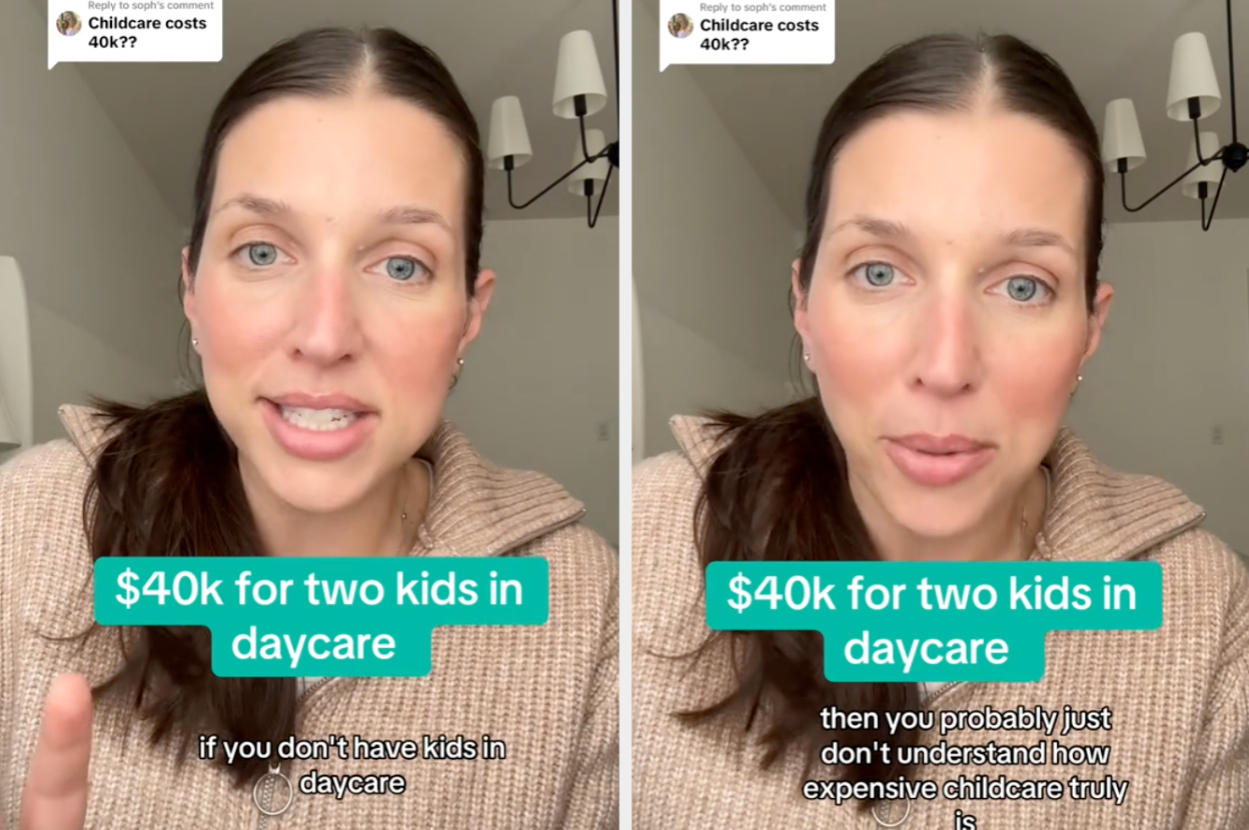
Paige also highlighted how childcare and the childcare crisis often fall on women to solve. She told BuzzFeed, "The cost of childcare disproportionately impacts women and is often framed as a 'women’s issue,' when in reality, it affects everyone, our society, our economy, and both men and women alike. When childcare is unaffordable, it forces families into difficult decisions, often pushing women out of the workforce or limiting their career growth."

For young people who might want kids but worry about the cost, Paige stressed researching the cost of care before having children. "Look into waitlists, availability, and rates in your area, as this information can be surprisingly difficult to find but is crucial for planning," she said.
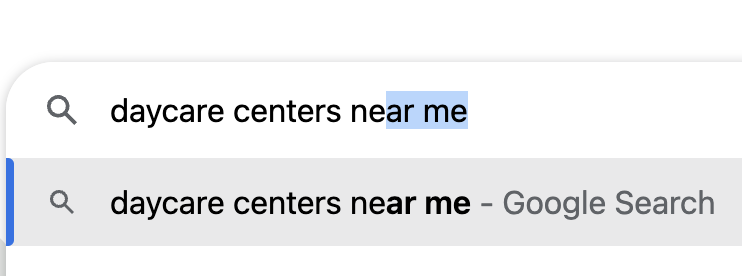
"I wish I had known just how much childcare costs would increase over time," she continued. "It’s risen exponentially in recent years. I also wish I had fully understood that childcare expenses don’t end when a child starts public school."
"Many parents assume costs will drop significantly at that point, but the reality is that before-school care, after-school programs, and summer camps add up quickly. Being prepared for these ongoing expenses can help parents make more informed decisions about family planning and financial stability."
On a last note, Paige shared why she continues to speak up about this crisis: "It’s important to bring awareness to these costs because we are in the middle of a childcare crisis in this country. In all 50 states, the average cost of full-time daycare for two children exceeds the average rent, placing a massive financial strain on families." (For context, the average rent in the US as of February 2025 is $1,556/month, according to Apartments.com.)
"By openly discussing these costs, I hope to shed light on the challenges families face and push for solutions that make quality childcare more accessible and affordable."


